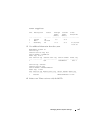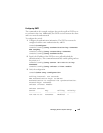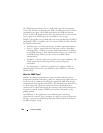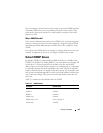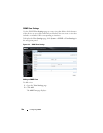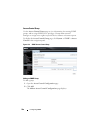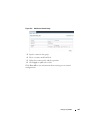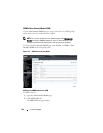
Configuring SNMP 325
You can configure various features on the switch to generate SNMP traps that
inform the NMS about events or problems that occur on the switch. Traps
generated by the switch can also be viewed locally by using the web-based
interface or CLI.
Why Is SNMP Needed?
Some network administrators prefer to use SNMP as the switch management
interface. Settings that you view and configure by using the web-based Dell
OpenManage Switch Administrator and the CLI are also available by using
SNMP.
If you do not use NMS software to manage or monitor other devices on your
network, it might not be necessary to configure SNMP on the switch.
Default SNMP Values
By default, SNMPv2 is automatically enabled on the device. SNMPv1 and
SNMPv3 are disabled. To enable SNMPv3, you must define a local engine ID
for the device. The local engineID is by default set to the switch MAC
address, however when the switch operates in a stacking mode, it is important
to manually configure the local engineID for the stack. This local engineID
must be defined so that it is unique within the network. It is important to do
this because the default engineID in a stack is the MAC address of the master
unit, which may change if the master unit fails and another unit takes over
the stack.
Table 13-1 summarizes the default values for SNMP.
Table 13-1. SNMP Defaults
Parameter Default Value
SNMPv1 Disabled
SNMPv2 Enabled
SNMPv3 Disabled
SNMP traps Enabled
SNMP trap receiver None configured
Switch traps Enabled



